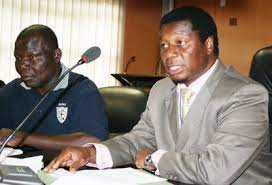
Alain Kabinda
By Alain Kabinda
CLIMATE change is one of the greatest challenges humanity is facing, and is predicted to become the biggest single driver of biodiversity loss over the next 50-100 years, larger than loss of habitat, over-exploitation, and introduction of invasive species.
According to the Zambia Environmental Management Agency (ZEMA), global climate change is being defined as a significant and lasting change in the statistical distribution of weather patterns over periods ranging from decades to millions of years, which may be a change in average weather conditions or the distributions of events around that average.
In 1992, the international community adopted the United Nations Framework Convention on Climate Change (UNFCCC), a global effort to confront climate change.
World Wide Fund for Nature (WWF) of Zambia plans to minimize impacts of climate-related risks and disasters in vulnerable communities’ ecosystems, social security through enhancing resilience by 2022.
WWF Zambia held a one-week climate change workshop and tour in Sesheke, Western Province, involving 12 Civil Society Organisations (CSO’s) to slow down the increase of atmospheric Green House Gases (GHG).
Forests help protect the planet by absorbing massive amounts of carbon dioxide (CO2), the most abundant type of pollution that causes climate change.
The UN Paris Agreement adopted at COP21 in 2015, demonstrating the world’s collective willingness to take urgent action, while locally, the United Nations Development Programme (UNDP) is supporting Reducing Emissions from Deforestation and Forest Degradation Plus (REDD) programme.
Food and Agriculture Organisation (FAO) is developing the Measurement, Reporting and Verification (MRV) system; and United Nations Environmental Programme (UNEP) is supporting communication process.
Zambia’s forest cover is estimated at 49.9 million hectares or 66 percent of the total land over of (ILUA Report, 20218) and loses about 270,000-300,000 hectares of forests per year.
With a majority of Zambians depending on agriculture, even a slight change in temperature can affect crops like maize with catastrophic consequences for livelihoods.
According to Justine Chipepo of Luanshimba village, in zambia’s Central Province is worried over insufficient perennial “rainfall affecting yields and increasing human and wild animals conflict over food.

Domiciano Mulenga, National Coordinator for Zambia’s Disaster Management and Mitigation Unit
Former Agriculture Minister Michael Katambo had pledged government provision of relief following a noted drought and flooding, a development confirmed by Domiciano Mulenga, National Coordinator for Zambia’s Disaster Management and Mitigation Unit (DMMU).
If extreme weather changes continue, in about 50 years, all that will remain of the Victoria Falls, known as the “7th wonder of the world”, could turn into an empty ravine, and lack of rain in Zambia’s South Luangwa region, is compelling animals to scavenge for roots and death of hippos.

Former Zambian President Kaunda talks with COMESA Secretary General Mwencha and Zambian President Mwanawasa in Zambian capital Lusaka. Former Zambian President Kenneth Kaunda (L), Common Market for Eastern and Southern Africa (COMESA) Secretary General Erastus Mwencha (C) and Zambian President Levy Mwanawasa (R) talk as they attend the 10th anniversary of Africa’s main trading bloc, the 19-member Common Market for Eastern and Southern Africa, or Comesa December 8, 2004 in Zambian capital Lusaka. REUTERS/Salim Henry
Zambia’s former First President late Kenneth David Buchizya Kaunda, once said help from developed countries will be crucial in coping with climate change, a view echoed by Tegegnework Gettu, of UNDP’s Africa region Director.
Zambia launched a National Adaptation Plan of Action (NAPA) and is in the process of preparing a National Climate Change Response Strategy (NCCRS) to curb indiscriminate cutting down trees.
Deforestation is affecting Africa at twice the world rate, a University of Pennsylvania African Studies Center, classified 31% pastures and 19% forests as “degraded.”
Africa is losing over 4 million hectares (about 9.9 million acres) of forest per year, while Sub-Saharan African countries, and deforestation at global annual average of 0.8
Southern African Development Community (SADC) countries face deforestation driven by charcoal production, agricultural and human settlement expansion and illegal exploration of timber as land-linked Zambia sharing borderline with Democratic Republic of Congo, Tanzania, Malawi, Mozambique, Botswana, Namibia and Angola.
Firewood for domestic energy supply, non-wood products and the economic value for tourism: forest ecosystem services contributes almost USD$ 1billion to the Zambian economy placing her as second highest per capital deforestation in Africa and fifth highest globally.



